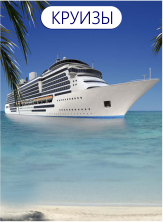 Azerbaijan - lies on the border of Europe (about 35% of the territory), and Asia. About half of the territory of Azerbaijan occupied by mountains. In the north - the ridge of the Caucasus, in the middle part - the Kura-Araks lowlands in the south-east - Talish Mountains and Lankaran lowlands. In Azerbaijan there are 9 out of 11 of the world's climate types. Average July temperatures from 5 ° C in the highlands to 25-27 (usually 32-35, but sometimes reaches up to 40) ° C in the lowlands, in January, respectively, -10 ° and 4 ° C. Precipitation of 200 mm per year in the foothills of the Caucasus to 1200-1700 mm on Lankaran lowlands.
Azerbaijan - lies on the border of Europe (about 35% of the territory), and Asia. About half of the territory of Azerbaijan occupied by mountains. In the north - the ridge of the Caucasus, in the middle part - the Kura-Araks lowlands in the south-east - Talish Mountains and Lankaran lowlands. In Azerbaijan there are 9 out of 11 of the world's climate types. Average July temperatures from 5 ° C in the highlands to 25-27 (usually 32-35, but sometimes reaches up to 40) ° C in the lowlands, in January, respectively, -10 ° and 4 ° C. Precipitation of 200 mm per year in the foothills of the Caucasus to 1200-1700 mm on Lankaran lowlands.
Azerbaijan is inherently unique unparalleled location on the planet where there are 9 types of climate, a huge amount of resources of natural resources, rich in flora and fauna.
Azerbaijan is in the subtropical zone of potential in this zone 11 climate types, 9 occur in the territory of Azerbaijan. It turns out that for 4-5 hours on one border to another traveler almost passes the globe. It is not surprising that Azerbaijan is the richest populations of species of animals and plants. Also on the territory of Azerbaijan is situated about 800 mud volcanoes, making Azerbaijan the first in the world in the number of mud volcanoes.
Azerbaijan is divided into 11 tourism regions:
1. Baku - Absheron Region
2. Northern Plains Region
3. North Mountainous Region
4. Northwest Region
5. Western Region
6. Mountainous Shirvan
7. Talysh - Mugan region
8. Karabakh region
9. Shirvan Plain
10. Central Region
11. Nakhchivan region
Azerbaijan - it's beautiful mountains and a huge sea, a mixture of eastern traditions and western development, one of the first centers of origin of mankind and excellent modern infrastructure.
The Caspian Sea - the largest on Earth closed lake situated at the crossroads of Europe and Asia, called the sea due to the fact that his bed is composed of the earth's oceanic crust. Due to the high content of iodine and bromine water, the water of the Caspian Sea is a unique source of health. (I Br) Iodine and bromine stimulate the metabolism and repair processes, anti-inflammatory effect. Iodine as a major component of Iodine-bromine water affects the processes of microcirculation, elastic properties of the vascular wall, blood rheological, lipid metabolism.
Baku - is the capital, scientific and industrial center of Azerbaijan Republic, as well as the largest port on the Caspian Sea and the largest city in the Caucasus. No wonder it is called The Pearl of Caucasus. Located on the southern shore of the Absheron peninsula. According to its antiquity, a large area and population of Baku is one of the oldest and largest cities in the East. According to well-known version of the name of the Baku comes from the translation and definition. pers. "Badikube" - "Wind Blows" is probably due to the local strong winds, and gave birth rooted nickname "Baku - the city of winds". Pearls of Baku are - Old city (XII century), Palace of Shirvanshakh (XII century), and Maiden Tower (VII - XII centuries). City from year to year is becoming more beautiful and more beautiful, memorable walks through the night city, the streets of the old town, and such as Nizami Street, Fountain Square and the famous promenade of the city of Baku.
Downtown is placed like an amphitheater, terraced down to the Baku Bay.
In the world there are two known deposits of oil treatment, which built resorts - naphthalene in Azerbaijan and naphthalene in Croatia. Resort naphthalene in Azerbaijan is working in the warm season, a wellness center «Naftalan», located in the exclusive village "Patamdart" (Baku), near the Caspian Sea, the treatment is carried out year round. Furthermore naphthalene resort has Iodine-bromine thermal waters, necessary for the release of medical procedures using naphthalene and balneotherapeutics.









